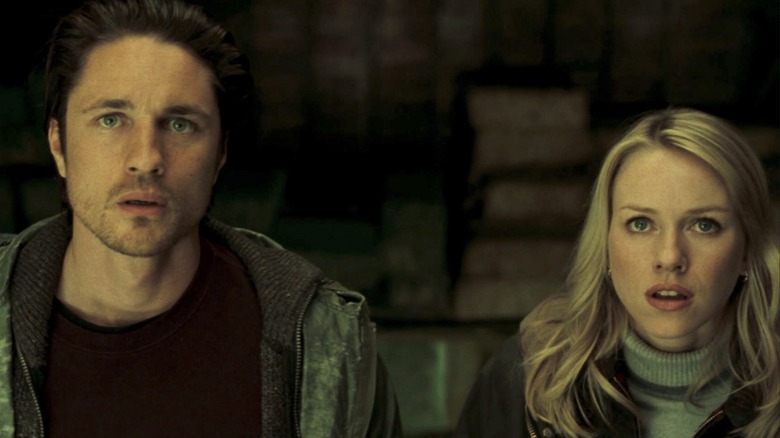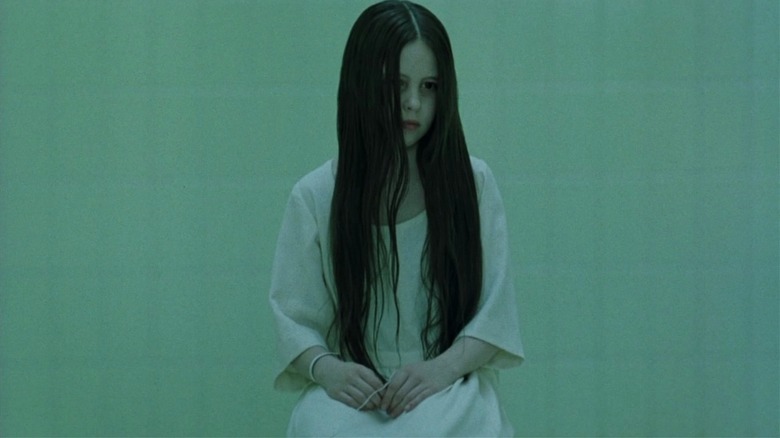The Ring's American Remake Cut Almost Half The Original Story (But Was Just As Scary)
Japanese horror has swept across American culture so handily that it may be easy to forget the film that started it all. Gore Verbinski was the first to start this trend with the horror classic, "The Ring." The film became so influential that "Sinister" was born as a direct response. The success of the film all started with Verbinkski's appreciation of "Ringu."
"I was impressed by the stark visual style," Veribinski told Curse of the Ring in 2002. "It's hard not to change things when you make a film, but I hope we kept enough of what made the first film great." It may not be obvious what these changes are at first glance. The structure of the film remains consistent, but if you take a closer look, there are fascinating story points that were altered between films.
In "Ringu," viewers learn the entire trajectory of Sadako's (Rie Ino'o) life. The result of an extramarital affair between a psychic and her doctor, Sadako takes after her mother with otherworldly powers. Intent on profiting off of his patient's abilities, Dr. Ikuma (Daisuke Ban) demonstrates her powers for the masses. This backfires when a journalist accuses the demonstration of being fraudulent. Sadako kills the journalist with her powers, which leads to her mother dying by suicide. Now desperate, Ikuma throws Sadako down a well, thus kickstarting the curse. But for American audiences, "The Ring" takes a more streamlined approach and never explicitly explains why the child is the way she is.
Making Samara's backstory more mysterious is just as terrifying
Even before the release of his version, Gore Verbinski was well aware that "The Ring" would be compared to the original. And while many will consistently debate if "The Ring" or "Ringu" is better, Verbinski understood that there would be a challenge in adapting a film that would appeal to a vastly different market.
"I found there to be a Dream logic vs. Emotional logic issue," Verbinski explained. "The western desire for linearity, and resolution are so destructive to a film like this. It's hard to fight against that and still keep the audience interested. As a director, I tried to use the breadcrumb approach rather than a hand on the back in leading the audience through the narrative." Instead of relying on heavy backstories and the supernatural elements of ghosts woven throughout the film, Verbinski leaned more into the realistic. Audiences don't get complex genealogies of where Samara is from.
With no reason why she has powers or why she delights in torturing those around her, she remains mysterious. She just is. And this is equally as terrifying as the spiritual horror found in "Ringu." Verbinski kept the bones of the original film, which is horrifying in its own way. No one wants to visualize parental figures murdering their children. The fact is that Samara and Sadako have no interest in punishing the guilty, and they'd rather punish anyone that crosses them. This makes for a horror film no one is likely to forget.

